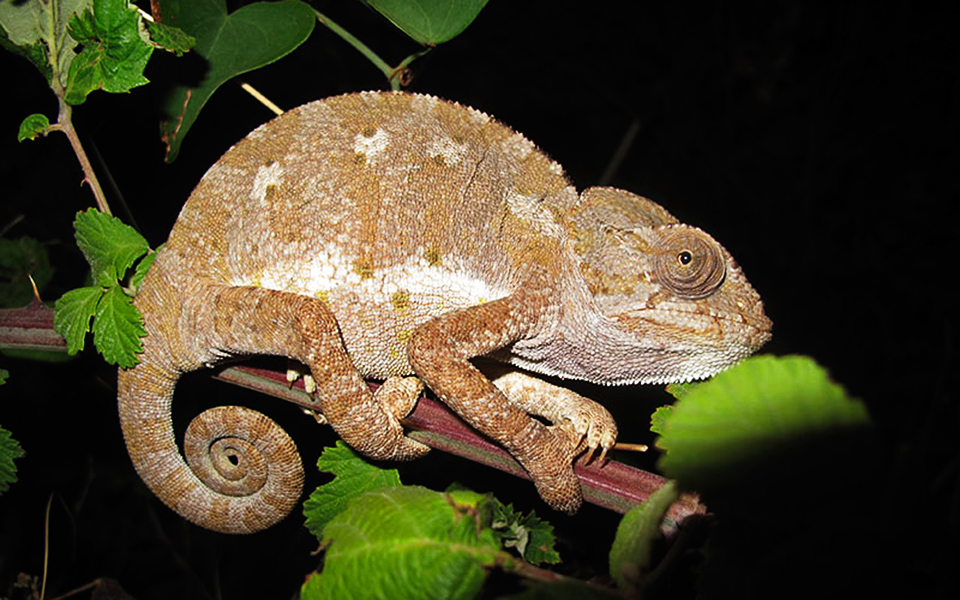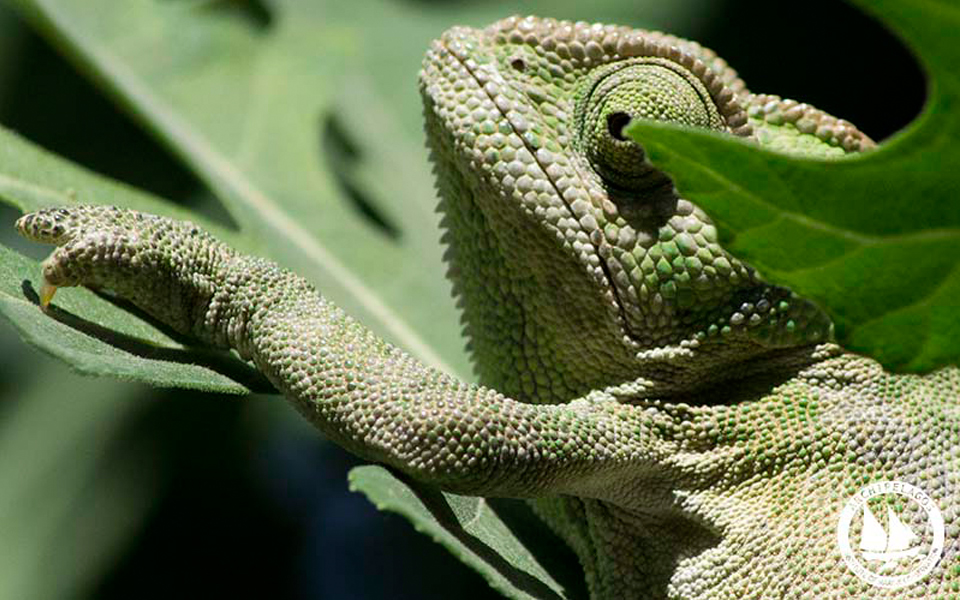Golden jackals are shy. They move discreetly, usually under the cover of night, keeping their distance from humans (probably quite wisely). When their presence does become known, it is usually thanks to their characteristic cries. Chameleons are equally hard to spot – in the winter they hibernate, while in the warmer months they exploit their famous ability to blend in with the surrounding vegetation.
Both creatures are among the rare species that live on the island of Samos, one of the last remaining oases of biodiversity in the Mediterranean.
Life on the land and in the waters of Samos can be thrilling, at least for biologists. A stunning 1,500 species of plants have been identified on the island, among them 60 species of orchid. Similarly hundreds of species of birds, mammals and reptiles, including many rare and endangered species, also find refuge in the island’s extensive forests.
“Hundreds of species of birds, mammals and reptiles, including many rare and endangered species, also find refuge in the island’s extensive forests.”

“They live next to us and you never see them! You only hear them at night. And that is because they avoid people and move very discreetly.”
The area’s marine life in is equally rich: the open waters are frequented by some of the most important populations of aquatic mammals in the Mediterranean including whales, dolphins and seals.
But our story today concerns two terrestrial creatures, each unique in its own way. The first has a rather unusual name that it owes to its light-colored coat: the golden jackal. “Samos is the last island in the Mediterranean that hosts a significant population of golden jackals,” explains Anastasia Miliou, the Head of Research at the Archipelagos Institute, an NGO dedicated to researching and protecting Greece’s biodiversity. “They live next to us and you never see them! You only hear them at night. And that is because they avoid people and move very discreetly.”
The existing small populations of jackals are predominantly located in coastal areas and on the plains, usually fairly close to settlements. “It is a very important animal for the ecosystem as they prey predominantly on rodents and help control their populations. Unfortunately however since the end of 1970’s their numbers have been continually declining due to more intensive agriculture and car fatalities. They are also often poisoned even though they rarely attack domesticated animals.”


The second unique species is the Mediterranean chameleon, a reptile that once lived on many Greek islands but has today disappeared from all except Samos. During the winter they hibernate and in the summer protect themselves thanks to their unique ability to change color and blend in with the undergrowth. They feed on insects, helping control their populations.
“In the past these beautiful creatures lived on many islands in the Aegean, and even until recent decades were found on Crete and Chios. The precipitous drop in their numbers is yet another ‘achievement’ of recent decades, the result of ignorance and indifference,” Miliou says.
One of the main threats the chameleon has faced in the past is the illegal wild animal trade. “There was a major problem on the island. [The locals] would catch them live and sell them as pets. A major effort was made working with the local population to combat this. Indeed, thanks to the educational programs we did in the schools of Samos, in recent years we have had incidents that were caught in time thanks to the kids,” Milios says. At the same time the chameleon is also threatened by the destruction of its habitats and the excessive use of pesticides.
Archipelagos has been studying both species since 2009. “It is very important to realize that the Aegean islands have been isolated ecosystems for centuries, which makes their biodiversity particularly vulnerable,” Miliou explains. “For that reason a large wildfire could prove disastrous.”
But for now the golden jackal and chameleon are holding on. Long may they lurk in Samos’s undergrowth, stealthy and unseen.
“It is very important to realize that the Aegean islands have been isolated ecosystems for centuries, which makes their biodiversity particularly vulnerable”












